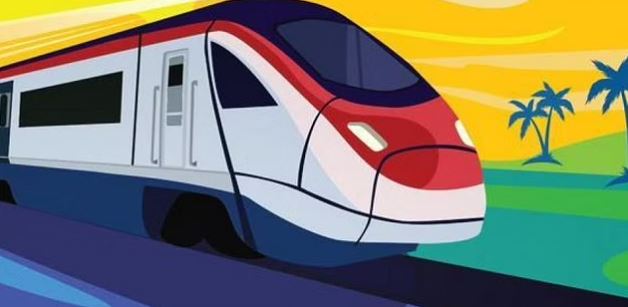Why the Silver Line Project makes sense for Kerala?

From Current Affairs Notes for UPSC » Editorials & In-depths » This topic
IAS EXPRESS Vs UPSC Prelims 2024: 85+ questions reflected
Context
- The Silver Line Project, to be built by the government of Kerala has received its share of criticism, much of it from political quarters, but also some academic sections.
What the editorial is about?
- The role that can be played by large capital-intensive infrastructure projects in the transformation of the town and country, regions, and nations.
The Silver Line Project
- The Silver Line Project to be built by the government of Kerala will link Thiruvananthapuram in the south to Kasargode in the north.
- The high-speed train will cover 530 km in four hours at a maximum speed of 200kmph.
- On the existing Indian Railways network, it now takes 12 hours.
- The deadline for the project, being executed by the Kerala Rail Development Corporation Limited (KRDCL), is 2025.
- KRDCL, or K-Rail, is a joint venture between the Kerala government and the Union Ministry of Railways created to execute big railway projects.
What was the need for the Silver Line project?
Opinion of Urban policy experts
- Urban policy experts have long been arguing that the existing railway infrastructure in Kerala cannot meet the demands of the future.
Curves and Bends
- Most trains run at an average speed of 45 km/hr. due to a lot of curves and bends on the existing stretch.
Reduce congestions and accidents
- The government claims the Silver Line project can take a significant load of traffic off the existing stretch and make travel faster for commuters, which in turn will reduce congestion on roads and help reduce accidents.
Greenhouse gas emissions
- The government claims the line will also reduce greenhouse gas emissions, help in the expansion of Roll on– Roll off (Ro-Ro) services, produce employment opportunities, integrate airports and IT corridors, and enable faster development of cities it passes through.
- Indeed, a study of INDC (Intended Nationally Determined Contribution) plans under the Paris Climate Agreement is instructive in this context.
- The EU study on mobility notes that HSR is the least-cost emission option among all modes of long-distance transportation.
Arguments against this project
- Critics have put forward three principal lines of argument, namely, its alleged adverse environmental impact, not being financially viable, and technical unsuitability.
- But a key look at the large-scale benefits of this project will answer each of these arguments put forward by the critics.
Environmental impact
- The most compelling environmental issue before us is climate change.
- Building capacities now to achieve a carbon net-neutral world over the next three to four decades is a core aspect of the national strategy of all nations.
- In this context, the Silver Line project scores high for India’s own climate objective of achieving net-zero emissions by 2070.
Learn from the global experiences
- We have more than 60 years of experience in Japan with Shinkansen or “bullet train” (1964), more than 40 years in Europe (France 1981), and more than a decade with the world’s largest HSR network (China 2008).
The driving forces behind Japan’s decision to develop the Shinkansen
- In the context of the global oil crisis, energy-insecure Japan wanted to develop a public transportation system that was energy-efficient and would also address national concerns concerning imbalanced regional growth.
- After the Kyoto Protocol was signed, more efforts were made to increase the speed of the various series of Shinkansen to meet the objectives of energy efficiency and CO2 reductions.
Financial viability
- Large-scale infrastructure projects are not based on short-term financial viability considerations alone.
- E.g., when the London Underground was conceived, it was not considered financially viable.
- Today, London’s economic activities are inconceivable without it.
Importance of government subsidies
- Green technologies that we consider cheaper than fossil fuel technologies were not initially financially viable and were unable to survive without government subsidies.
Conclusion
- The notion of development such as the London underground should be the standard against which large projects such as Silver Line are to be evaluated.
- There are abundant international examples of the role played by large capital-intensive infrastructure projects in the transformation of the town and country, regions, and nations.
Referred Sources
If you like this post, please share your feedback in the comments section below so that we will upload more posts like this.


